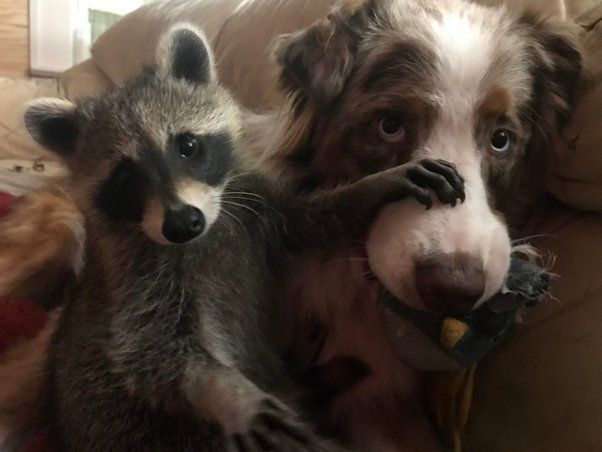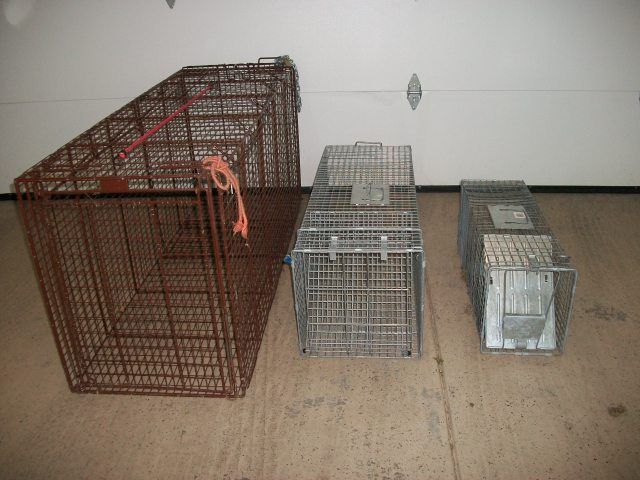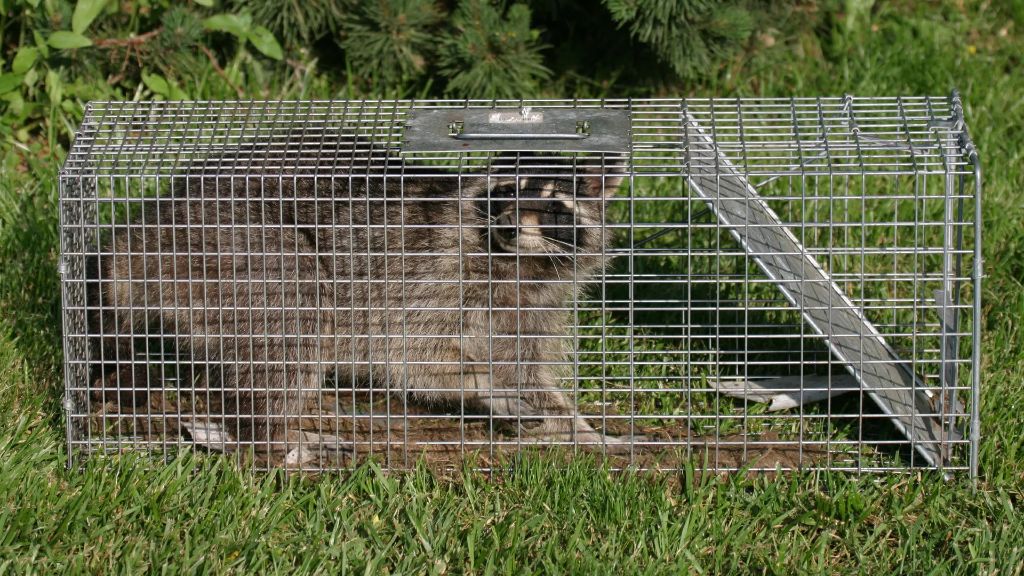Introduction
Raccoons can often cause problems for pet owners, especially those with dogs. Raccoons are intelligent, adaptable animals that are commonly found living in close proximity to humans. This can lead to conflicts when raccoons get into trash, damage property, or pose dangers to pets.
One major concern for dog owners is the potential for raccoons to attack and injure dogs. Raccoons have sharp claws and teeth and can be aggressive when provoked. Small dogs in particular are at risk of being harmed in an encounter with a raccoon. According to veterinarians, raccoon attacks on dogs are most common in the spring and summer when young raccoons are exploring territories (University of Illinois Veterinary Teaching Hospital, 2022).
In addition to direct attacks, raccoons can also pose a disease threat to dogs. Raccoons are known carriers of rabies, baylisascariasis, leptospirosis, canine distemper, and other harmful diseases. These can be transmitted to dogs through direct contact or contamination of areas where dogs spend time. According to the Kansas State Veterinary Health Center, any abnormally acting raccoon should be reported to animal control due to the rabies risk (2017).
For dog owners dealing with nuisance raccoons, a humane trapping solution may be necessary. This overview will discuss an effective dog proof raccoon trap and provide guidance on proper use and humane practices.
Raccoon Behaviors
Raccoons are naturally curious and opportunistic animals that can frequently come into conflict with household pets like dogs. Raccoons are known for getting into trash, gardens, attics and other areas around homes in search of food. They are also territorial and will defend their territory or food sources aggressively, especially against perceived threats like dogs. Why can raccoons present problems around dogs? Here are some key behaviors and issues to be aware of:

Raccoons may go after a dog’s food – They can smell dog food left outside and may try to steal and eat it when pets are not around. This poses a risk of confrontation, injuries and disease transmission if the dog encounters the raccoon.
Habituation – Raccoons that become accustomed to dogs and humans may lose their fear and natural wariness. This makes them more likely to approach dogs and makes aggressive encounters more probable.
Perceived threats – Raccoons are likely to attack or become defensive if dogs corner them or come near their young. Even encountered unexpectedly, raccoons may lash out at dogs by scratching and biting.
Disease transmission – Raccoons can carry diseases like rabies, roundworm and distemper that are transmissible to dogs. Aggressive contact poses risks of infections that require veterinary care.
By understanding typical raccoon behaviors, pet owners can take preventive measures to avoid conflicts and keep dogs safe.
Preventive Measures
Before resorting to trapping, there are some simple preventive measures you can take to deter raccoons and keep them away from your property and pets:
Remove any food sources like pet food, unsecured trash cans, and fallen fruit that may attract raccoons (Three Tips on How to Deter Raccoons). Make sure trash cans have tight fitting lids and do not have any access points for raccoons.
Install motion sensor lights and sprinklers in areas raccoons frequent. The sudden light and water will startle them and deter them from returning (Three Tips on How to Deter Raccoons).
Use ammonia or bleach to wipe down surfaces and soak cotton balls to place in areas raccoons frequent. The strong odors are unpleasant and will deter them (Three Tips on How to Deter Raccoons).
Play sounds of predators like coyotes, dogs barking, or screams to frighten raccoons away (What things scare raccoons?).
Let your dogs roam your property as much as possible, as dogs can deter raccoons with their scent and presence (What things scare raccoons?).
Overview of Trapping Options
There are various options for trapping raccoons, each with their own pros and cons:
Live Cage Traps: These are humane traps made of wire mesh or steel that allow you to catch a raccoon alive and release it elsewhere. Pros are that they are humane and allow for relocation. Cons are that they can be bulky, expensive, and require you to handle and transport the live raccoon. According to raccoontrappingtips.com live cage traps work best baited with cat food, fish, or fruit. Set the trap on a flat, stable surface.
Body Grip Traps: These are lethal traps that use spring-loaded jaws to crush the raccoon’s neck/torso when triggered. They kill the raccoon quickly. Pros are that they are inexpensive and don’t require you to handle the animal. Cons are that they will kill the raccoon, which some see as inhumane. Use with caution and as a last resort when relocation is not an option.
Bucket Traps: These DIY traps involve baiting a bucket with cat food and placing a ramp or stick leading up to the bucket lip. When the raccoon steps on the ramp, it tips them into the bucket where they become trapped. Pros are they are inexpensive and hands-off. Cons are you need to handle and humanely euthanize the trapped raccoon.
Whenever trapping, be sure to check local laws and regulations around raccoon trapping in your area.
Introducing the Duke Dog Proof Trap
The Duke Dog Proof Raccoon Trap is a highly effective and humane trap designed specifically to catch raccoons while avoiding non-target animals like dogs and cats. According to Trapshed, this trap features a sturdy, fully-enclosed design to prevent access from domestic animals. It uses powerful coil springs and a sensitive trigger system to quickly and securely trap raccoons.

This trap is constructed using heavy-duty steel and latches that keep the trapped animal completely contained. As described by Animal Traps and Supplies, the Duke trap has a straight spade staking system allowing it to be firmly planted in the ground once set. Swiveling chains prevent captured raccoons from getting tangled. The enclosed box design also protects animals from weather conditions.
According to Fleming Traps, the trap is activated when raccoons reach in and attempt to remove bait from the back of the trap. This triggers the spring-loaded trap door, capturing the animal humanely by the paw or arm. The trap’s smart design and sensitivity ensures rapid activation upon a raccoon’s minor contact.
Benefits
One of the main benefits of the Duke dog proof trap is that it allows pet owners to trap raccoons humanely and safely [1]. The enclosed design prevents dogs and cats from accidentally getting caught in the trap. The trap door only opens when a raccoon reaches inside, so pets outside the trap remain safe.
The Duke trap was designed specifically for trapping raccoons that may be threatening pets or causing property damage. It humanely captures raccoons without harming any domestic animals. The trap’s sensitivity ensures that even a light touch by a raccoon will spring the door closed.
With the Duke trap, pet owners no longer have to choose between protecting their home and pets from nuisance raccoons and keeping their dogs and cats safe. It allows humane raccoon control without putting pets at risk [2]. For those dealing with raccoons in an area with indoor/outdoor pets, the Duke trap presents the ideal solution.
Proper Use
Using the Duke Dog Proof Trap properly and humanely is essential. Here are step-by-step instructions and tips:

Choose a suitable location: Place the trap where you have seen raccoon activity or along paths they frequent. Choose an area away from domestic pets.
Bait the trap: Bait should be smelly and appealing to raccoons such as fish, chicken, bacon, or peanut butter. Place bait at the back of the trap so raccoons have to step completely inside to reach it.
Set the trap: Carefully set the trigger mechanism while keeping hands and fingers clear. Ensure the trap is stable and level on the ground.
Check traps frequently: Check traps at least once early in the morning and again in late afternoon. Check local regulations for humane trapping guidelines.
Release safely: Once trapped, cover the trap with a dark cloth to calm the animal before transporting. Release the raccoon within 24 hours in a suitable habitat at least 5 miles from capture location.
Follow these proper use tips and the Duke Dog Proof Trap can effectively help manage nuisance raccoons without harming other animals.
Troubleshooting
Even the best trappers encounter issues with traps sometimes. Here are some troubleshooting tips for the Duke dog proof trap:
If raccoons are able to steal bait without tripping the trap, try securing the bait more firmly under the trigger using wire. Only leave a small piece exposed so the raccoon has to tug hard to get it (“Need help with Duke dog-proof traps”, 2022).
If the trap isn’t catching anything at all, try repositioning it directly in an active trail and burying it at an angle deep enough that the spring won’t bind when triggered (“Struggling with dog proofs”, 2020).
Check for mechanical issues like a weakened spring or obstructions preventing the trap from closing properly. Clean off any dirt or buildup and wipe down the metal parts.
Consider adding more bait or a stronger-smelling attractant. Trail cameras can reveal if animals are investigating but not setting off the trap.
Make sure the trap is level and on a hard surface. Soft ground can allow the trap to shift when triggered, preventing it from closing completely.
Be patient. It can take a few nights for raccoons to get comfortable approaching and entering the trap.
Humane Use
When trapping raccoons, it’s important to handle the animals in a humane manner once they are caught. Raccoons are intelligent creatures that can feel pain and fear. Here are some tips for ensuring trapped raccoons are handled properly:

Check traps frequently, at least once daily. Trapped raccoons should not be left for long periods of time. According to wildlife experts, traps should be checked every 12 hours or less 1.
Use traps designed to be humane and avoid injury. Recommended humane traps include live cages and box traps rather than foothold traps. Ensure traps are working properly and are stable so raccoons don’t become further injured trying to escape.
Handle raccoons gently if removing them from traps. Wear thick gloves to prevent bites or scratches. Control the head and body while supporting the weight to limit stress.
Keep trapped raccoons calm. Covering cages with a light cloth can help reduce fear and keep raccoons relaxed until they are relocated.
Transport and release raccoons promptly. Move them at least 5 miles from the trapping location to prevent them from returning. Release in a suitable habitat during daytime hours.
Avoid trapping mother raccoons with dependent young. If accidentally trapped, immediately release the mother in the same area so she can reunite with her kits.
Consider working with a professional wildlife control expert if you lack experience trapping or handling raccoons humanely.
With proper diligence and humane practices, nuisance raccoons can be removed without causing undue stress or harm.
Conclusion
In summary, the Duke Dog Proof Raccoon Trap is one of the top options for humanely trapping and relocating nuisance raccoons. The trap offers the following key benefits:
– Its unique design ensures it does not trap domesticated animals or pets; only wild animals like raccoons. This is essential for safe trapping.
– It is effective at catching healthy adult raccoons and relocating them. When used properly with the right bait, it traps raccoons quickly.
– The trap is durable and sturdy. Made of steel with electro-coat and powder coat finish, it withstands outdoor use with weather and wildlife.
– It meets BMP standards for humane trapping. The design allows for release without injury or harm to the animal once trapped.
– The trap is easy to set up and use following the instructions. It does not require special skills.
For an effective and humane do-it-yourself raccoon trap, the Duke Dog Proof model is a top-rated choice to safely remove nuisance raccoons from your property.